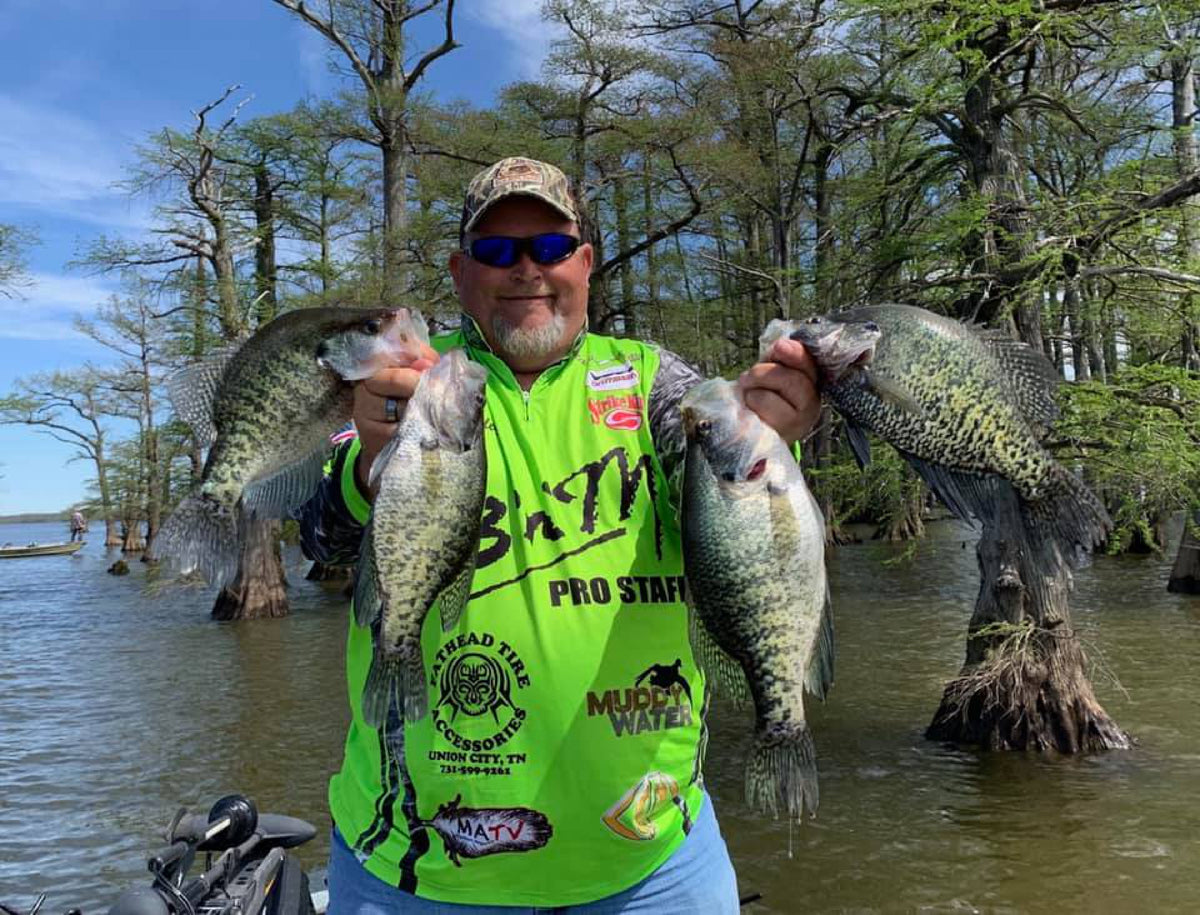Cold Water Crappie Tips from The B’n’M Pros
Cold Water Crappie Tips from the B’n’M Pros
Part 1 of a 2-part series, enjoy this collection of crappie fishing tips that will help you catch more crappie this winter.
By Phillip Gentry
One of the great things about being associated with a group of the best crappie anglers in the country is the wealth of knowledge that can be gained just by listening to the folks on the B’n’M pro-staff. These pros are professional fishing guides, tournament pros, seminar speakers, radio and television personalities, and all around well versed in how to catch crappie.
To round out the year, we spoke with some of our pros and asked them to give us just one cold water crappie fishing tip that would help crappie anglers start the 2020 season off by putting more fish in the livewell.
John Harrison (Famed Grenada Lake fishing guide and tournament pro) - In the winter, about the only tactic I use is single pole jigging. A lot of people make the mistake of fishing with minnows in the winter. Now I will tip with minnows in the spring, but in the winter time I don’t think they’re necessary. I will put some scent on my jig like a crappie nibble or something that will stick to the bait but I don’t tip with minnows. Another thing is I don’t do is use straight minnows in the winter. The exception to that rule might be when I’ve got exceptionally clear water and I’m trying to catch black crappie. I believe the black crappie are more finicky than white crappie and then I will only use the smallest, tiniest minnow that I can find.

Fin Commander John Godwin uses a bead added between the first and second guide to let him know when he gets a winter crappie bite.
John Godwin (Professional crappie angler and world renown TV show personality) - Here’s a tip that my partner, Jay Stone, and I have figured out when tight lining for crappie during the winter that will help you detect bites. Thread a red bead on the line between the second to last and the last guide at the end of the rod. That way when you get a bite you can also hear that bead tapping against the rod blank because it will make a little bit of noise. You can also watch that bead along with the rod tip and see it vibrating a little bit better than you might see of just the rod tip itself. I promise, you will like this tip and it will help you detect more bites and catch more fish.

American Crappie Trail’s Matt Morgan has a great tip for using Livescope sonar.
Matt Morgan (Professional tournament angler and Director of the American Crappie Trail) - My tip involves the active use of sonar while fishing, specifically when using the new Livescope sonar. I use 15-pound braid for my main line and then attach a section of 10-pound flouro-carbon to that. Just past the knot between the main line and the leader, I thread a 1/8-ounce egg sinker and use a small bobber stop on either end of the weight to hold it in place. Below the weight, at a distance of a foot, 8 inches or maybe even less if I’m in heavy cover, I will attach a 1/32-ounce jig in a natural color. The purpose of this sinker is not for additional weight. When I lower the rig slowly into the water, I am watching it on my Livescope. Both the weight and the jig will show up on the sonar. That allows me to distinguish the jig from a lot of other small particles in the water that might be mistaken for my bait. By knowing exactly where my weight and the jig is, I can lower that bait slowly and put it right above the fish. For cold water and lethargic fish, this is a great way to elicit bites.
Tournament angler Matthew Outlaw said believing crappie leaving swampy shallow areas during the winter is a myth.
Matthew Outlaw (Professional crappie angler and Seminar Speaker) - In the swampy areas of many lakes in Florida and the Santee Cooper lakes where I fish the most, I love to go fish the swamps during the winter. Some people believe that crappie migrate in and out of the swamps with the seasons but that is not true. Those fish have everything they need in that swamp and they stay there year-round. You need to think about a swamp as a lake inside a lake. Now in the winter, crappie will gravitate to the deeper ditches and creeks that feed the swamp. Those ditches may only be a foot or two deeper than the rest of the area, but those fish will congregate there. Water levels also tend to drop during the winter. That means, unless there is a severe drought that pushes all of the water out of the swamp, those fish will stay in those ditches and the lower than normal water will help concentrate them there. I fish for crappie a number of different ways in the swamp, but my preferred method is to use a slip cork and cast for them or use a jig pole and jig for them in those ditches and deeper areas.
Stay tuned, next time we’ll bring you some more cold-water crappie tips from the B’n’M poles to help you round out the 2019 fishing season and get 2020 off to a great start. Visit our website at bnmpoles.com
Also in Weekly Tips and Techniques

Winter Crappie Fishing Strategies with Lance Hughey
B’n’M pro-staffer Lance Hughey said it never gets too cold to catch crappie.

North Texas Fall Crappie Fishing with Brian Carter
Texas crappie pro-staffer Brian Carter loves to pitch jigs at standing timber during the fall of the year.

Summer Crappie Fishing with Billy Blakley
B’n’M pro-staffer Billy Blakley claims the copious amount of rainfall so far this year has created some great summer crappie fishing on Reelfoot Lake.

